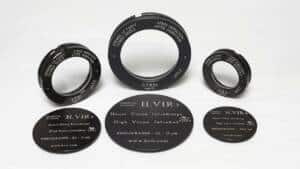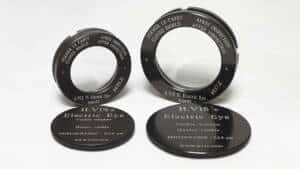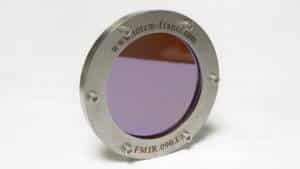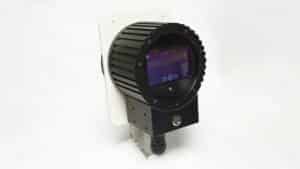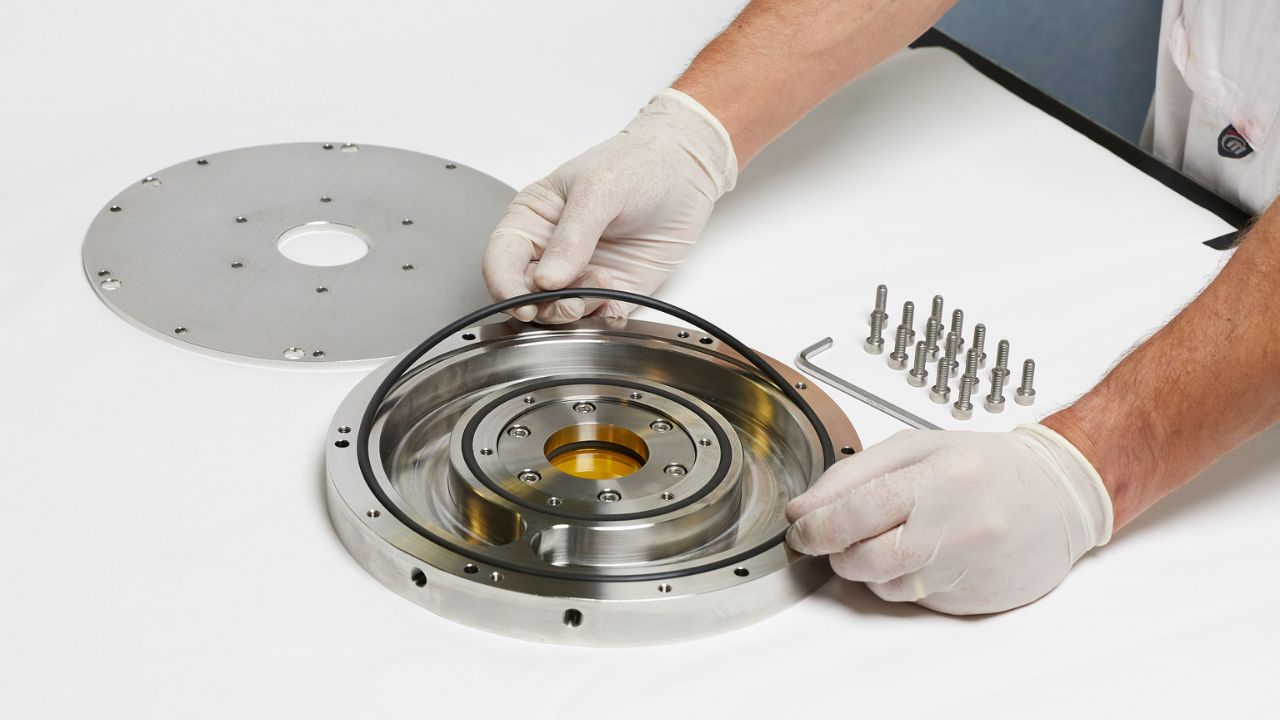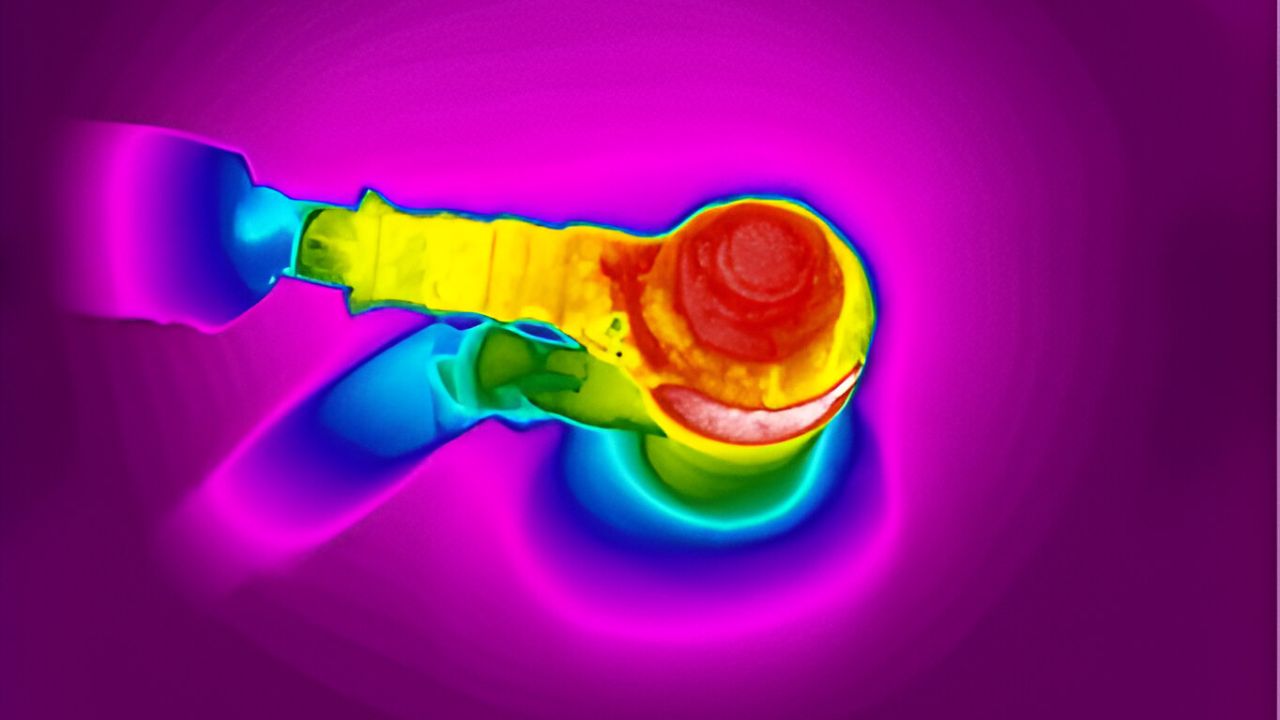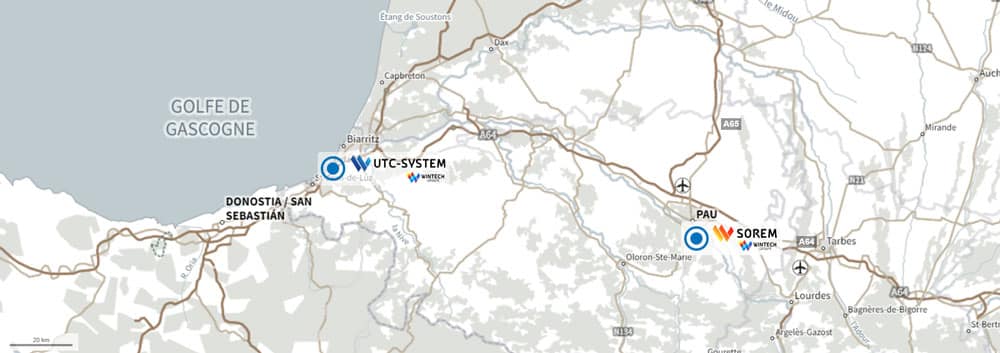How to choose an optical window?
Optical windows are used for a wide range of industrial and research applications such as visual inspection of equipment, monitoring of manufacturing processes, conducting medical or mechanical experiments, and performing spectroscopy studies. When designing an optical window, it is important to consider the application environment and the spectral domain to achieve the desired results. These two criteria are essential for determining the choice of manufacturing material. In this article, we will introduce you to the three main families of materials and the main criteria for selecting components for an optical window that guarantees optimal results.
What is an optical window?
An optical window is an observation interface that separates two environments while allowing the chosen light to pass through. Made of a material that can be transparent, the optical window is designed to maximize transmission in a certain spectrum (ultraviolet, visible, infrared) while minimizing light reflection and absorption. This is the result of the choice of material-specific mechanical and optical characteristics.
It can be dedicated to the protection of equipment by limiting the impact on incoming and/or outgoing optical signals. The optical window can also be used as a viewing and/or measuring lens while preventing external elements such as water, dust or air from coming into contact with the inside of the equipment.
Two types of optical windows can be distinguished:
- Plane parallel windows: used to reduce the distortion of a beam of light transmitted by a specific wavelength
- Prismatic windows: used to direct transmitted light at a specific angle and reduce rear reflection.
The optical window can have different shapes (round, rectangular, oval or freeform) depending on its use and the application medium. Industry (aeronautics, defence, security, transport, petrochemicals, etc.), research institutes, private or public laboratories use optical windows to conduct tests, carry out measurements, inspections or to carry out work in the field of spectroscopy (UV) and thermography (IR).
To respond effectively to the expected use and the targeted spectral range, the selection of the material is crucial. It will be chosen from three main categories: Categories: Glass, Polymer or Crystal. Let’s take a look at the main characteristics of these families of materials.
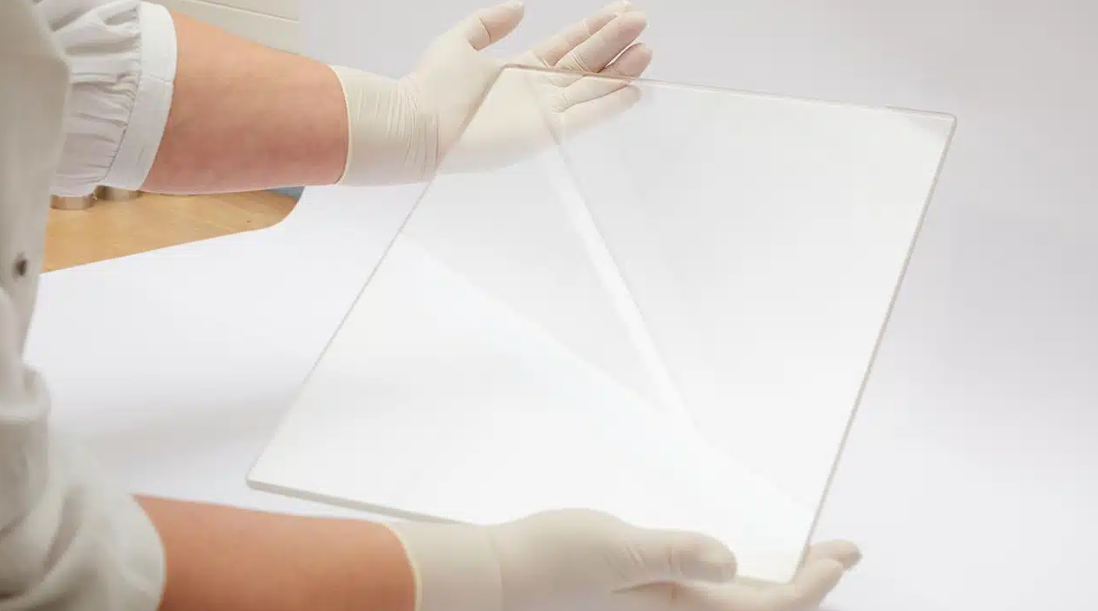
What are the different materials used in designing an optical window?
For the creation of an optical window, there are three main categories of materials with different properties:
- Glass: Transparent, hard, and easy to polish, optical glass has historically been used to make optical lenses and mirrors. Glass has a low refractive index (it does not deflect visible light significantly). Several types of glass exist, differing in their main components that give them their mechanical, thermal and optical characteristics. These components include silica or borosilicates. The choice of optical glass components will depend in particular on the spectral range of the application (ultraviolet, visible, infrared). The main disadvantage of optical glass is that it is brittle and can crack under certain conditions.
- Polymer: Polymers such as cell acetate, polycarbonate, polyurethane or acrylic (PMMA) are lightweight, impact-resistant materials that are inexpensive to produce. They have a lower refractive index than glass, which can be an advantage for some applications. Conversely, under certain conditions, polymers are less transparent and less durable than glass. They have a lower heat resistance.
- Crystal: Have excellent optical properties and are often used in specialized applications such as precision optics. Crystals, such as quartz or sapphire, are very transparent and have low dispersion (they do not significantly deflect light from different wavelengths). Each type of crystal has its own properties that cause a change in the light that passes through them. They are more expensive to produce than glass or plastics.
The choice of optical window material depends on its application. Optical glass is commonly used for visible light applications while crystals (sapphire, CaF2, ZnSe, ZnS, Germanium, etc.) are preferred for UV or IR applications referred for UV or IR applications. These two materials are the most commonly used. To determine the most suitable material for the requirements of the expected application, it is necessary to consider its properties, and more specifically: its transmission, refractive index and hardness.
What are the criteria for selecting the material of an optical window?
When selecting a material for manufacturing an optical window that is suitable for a given application, several criteria are considered, including transmission, refractive index, and Knoop hardness
The transmission of an optical window
Transmission is the ability of the material to transmit light in a given wavelength. The reflective and absorption capacity of light defines the percentage of transmission. For applications in the field of imaging or spectroscopy, high transmission is paramount to obtain quality images or data.
The refractive index of an optical window
The refractive index of an optical window determines how light bends as it passes through the material and is an important factor in the design of optics such as lenses or prisms. The refractive index of an optical window depends on the material of the window and the wavelength of the light.
The Knoop hardness of an optical window
The Knoop hardness is used to measure the hardness of the material. This parameter is very important for optical window applications in harsh environments (pressure, high temperature, etc.) or abrasive conditions. The higher the Knoop hardness of a material, the higher its mechanical strength or scratch resistance will be.
To design an optical window, it is crucial to define precise specifications in advance that indicate the objectives of use and the conditions of application. This helps in selecting the most suitable material based on known performance criteria such as transmission, refractive index, and hardness.
Optical windows are used for a wide range of industrial and research applications such as visual inspection of equipment, monitoring of manufacturing processes, conducting medical or mechanical experiments, and performing spectroscopy studies. When designing an optical window, it is important to consider the application environment and the spectral domain to achieve the desired results. These two criteria are essential for determining the choice of manufacturing material. In this article, we will introduce you to the three main families of materials and the main criteria for selecting components for an optical window that guarantees optimal results.
What is an optical window?
An optical window is an observation interface that separates two environments while allowing the chosen light to pass through. Made of a material that can be transparent, the optical window is designed to maximize transmission in a certain spectrum (ultraviolet, visible, infrared) while minimizing light reflection and absorption. This is the result of the choice of material-specific mechanical and optical characteristics.
It can be dedicated to the protection of equipment by limiting the impact on incoming and/or outgoing optical signals. The optical window can also be used as a viewing and/or measuring lens while preventing external elements such as water, dust or air from coming into contact with the inside of the equipment.
Two types of optical windows can be distinguished:
- Plane parallel windows: used to reduce the distortion of a beam of light transmitted by a specific wavelength
- Prismatic windows: used to direct transmitted light at a specific angle and reduce rear reflection.
The optical window can have different shapes (round, rectangular, oval or freeform) depending on its use and the application medium. Industry (aeronautics, defence, security, transport, petrochemicals, etc.), research institutes, private or public laboratories use optical windows to conduct tests, carry out measurements, inspections or to carry out work in the field of spectroscopy (UV) and thermography (IR).
To respond effectively to the expected use and the targeted spectral range, the selection of the material is crucial. It will be chosen from three main categories: Categories: Glass, Polymer or Crystal. Let’s take a look at the main characteristics of these families of materials.

What are the different materials used in designing an optical window?
For the creation of an optical window, there are three main categories of materials with different properties:
- Glass: Transparent, hard, and easy to polish, optical glass has historically been used to make optical lenses and mirrors. Glass has a low refractive index (it does not deflect visible light significantly). Several types of glass exist, differing in their main components that give them their mechanical, thermal and optical characteristics. These components include silica or borosilicates. The choice of optical glass components will depend in particular on the spectral range of the application (ultraviolet, visible, infrared). The main disadvantage of optical glass is that it is brittle and can crack under certain conditions.
- Polymer: Polymers such as cell acetate, polycarbonate, polyurethane or acrylic (PMMA) are lightweight, impact-resistant materials that are inexpensive to produce. They have a lower refractive index than glass, which can be an advantage for some applications. Conversely, under certain conditions, polymers are less transparent and less durable than glass. They have a lower heat resistance.
- Crystal: Have excellent optical properties and are often used in specialized applications such as precision optics. Crystals, such as quartz or sapphire, are very transparent and have low dispersion (they do not significantly deflect light from different wavelengths). Each type of crystal has its own properties that cause a change in the light that passes through them. They are more expensive to produce than glass or plastics.
The choice of optical window material depends on its application. Optical glass is commonly used for visible light applications while crystals (sapphire, CaF2, ZnSe, ZnS, Germanium, etc.) are preferred for UV or IR applications referred for UV or IR applications. These two materials are the most commonly used. To determine the most suitable material for the requirements of the expected application, it is necessary to consider its properties, and more specifically: its transmission, refractive index and hardness.
What are the criteria for selecting the material of an optical window?
When selecting a material for manufacturing an optical window that is suitable for a given application, several criteria are considered, including transmission, refractive index, and Knoop hardness
The transmission of an optical window
Transmission is the ability of the material to transmit light in a given wavelength. The reflective and absorption capacity of light defines the percentage of transmission. For applications in the field of imaging or spectroscopy, high transmission is paramount to obtain quality images or data.
The refractive index of an optical window
The refractive index of an optical window determines how light bends as it passes through the material and is an important factor in the design of optics such as lenses or prisms. The refractive index of an optical window depends on the material of the window and the wavelength of the light.
The Knoop hardness of an optical window
The Knoop hardness is used to measure the hardness of the material. This parameter is very important for optical window applications in harsh environments (pressure, high temperature, etc.) or abrasive conditions. The higher the Knoop hardness of a material, the higher its mechanical strength or scratch resistance will be.
To design an optical window, it is crucial to define precise specifications in advance that indicate the objectives of use and the conditions of application. This helps in selecting the most suitable material based on known performance criteria such as transmission, refractive index, and hardness.

